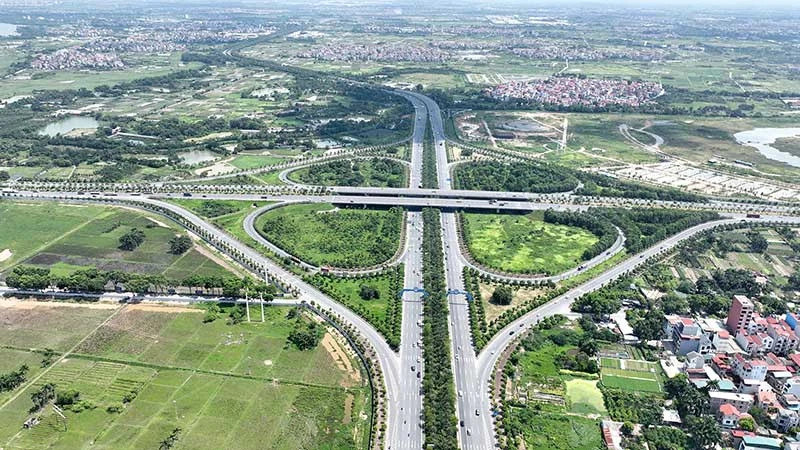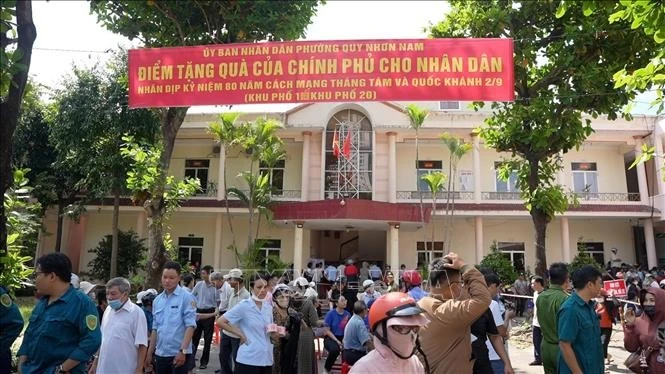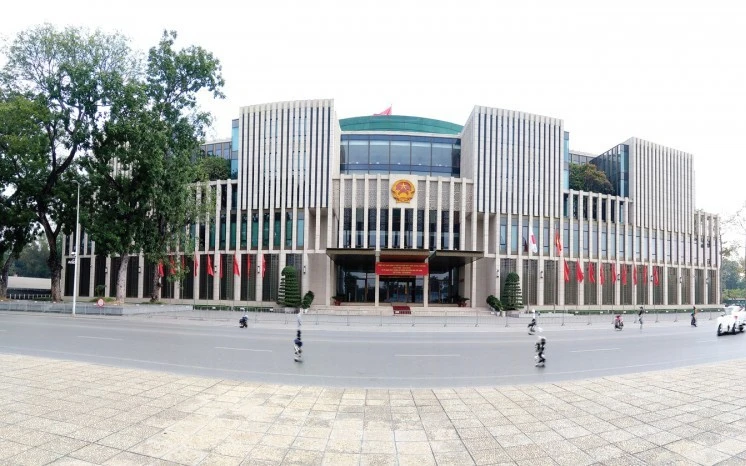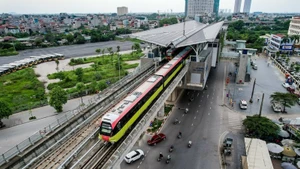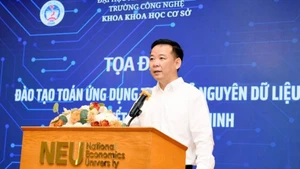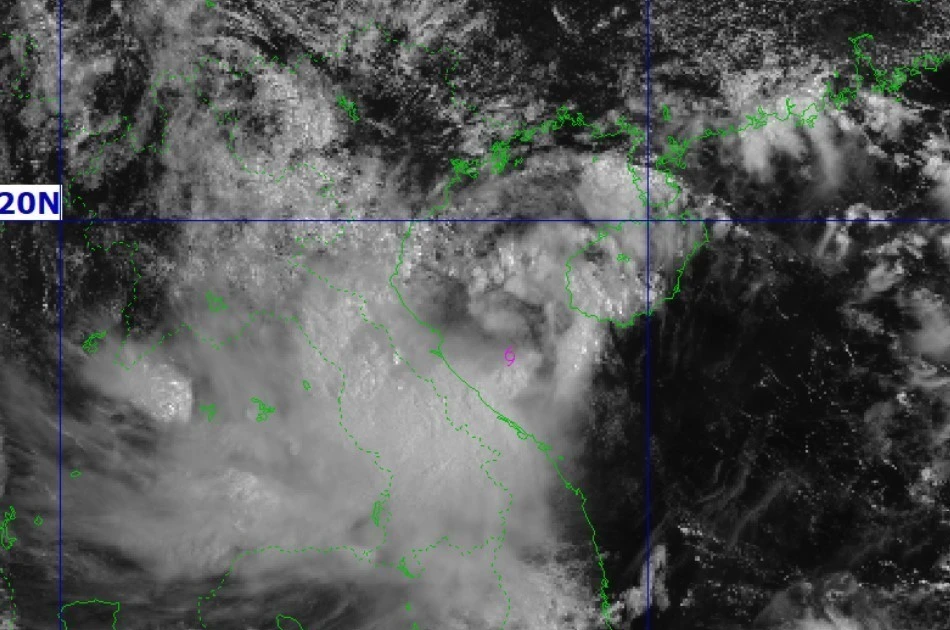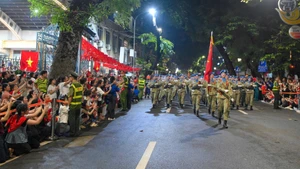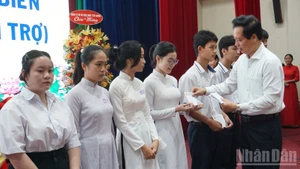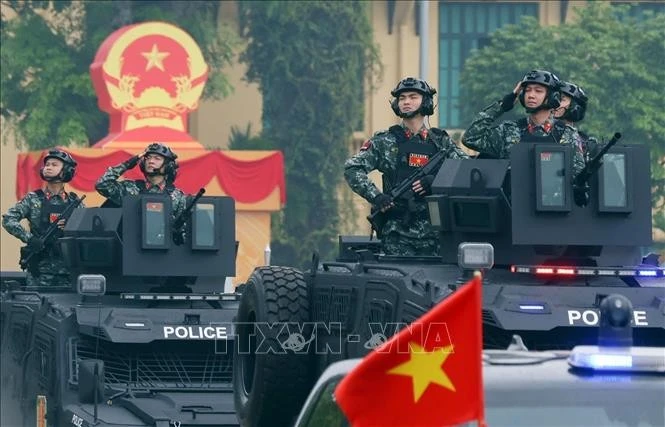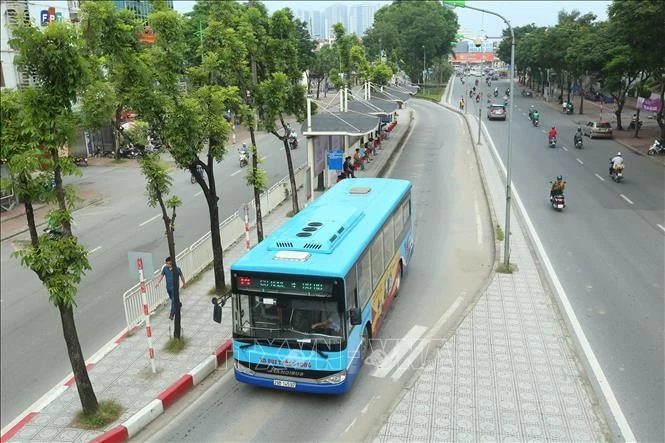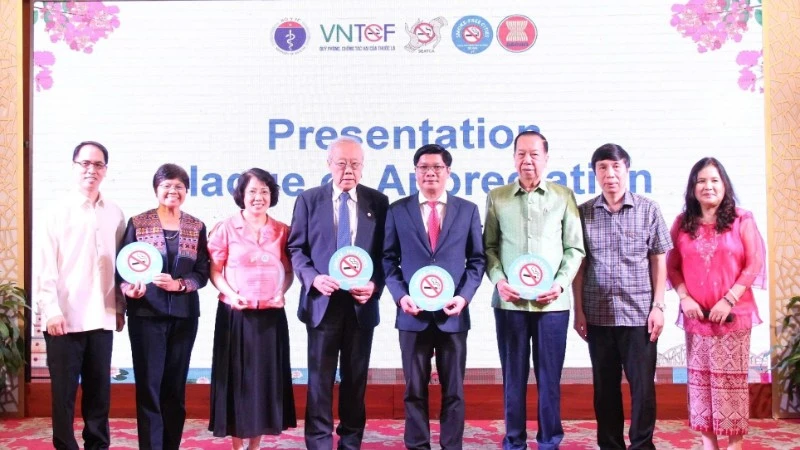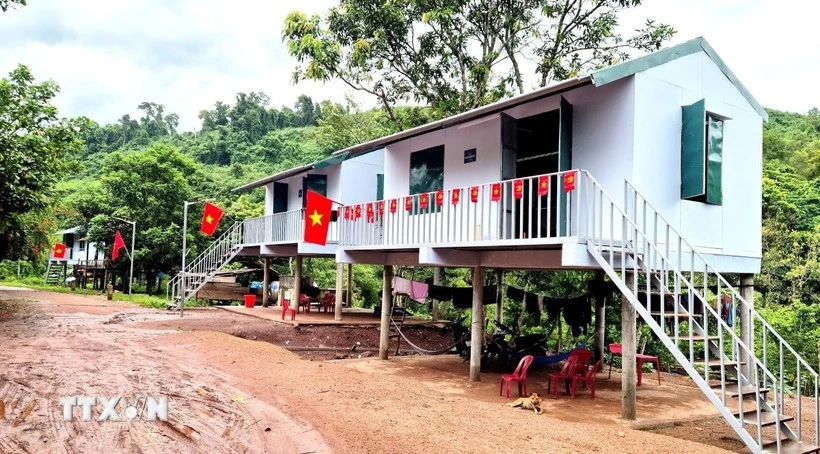To overcome this situation and to gain a development level on par with the capitals of developed countries in the region and the world, striving to become a globally connected city by 2045, Hanoi is focusing on making a Capital Hanoi Planning for the 2021-2030 period, with a vision to 2050. The planning features the integration of many important fields and contents to orient the socio-economic development space, defence-security, infrastructure system, land allocation and the use of natural resources.
Although the Capital Hanoi Planning for the 2021-2030 period, with a vision to 2050, is in the process of receiving, explaining opinions and completing documents, it has been assessed by many experts as a breakthrough that creates a big mark in the field of planning. It will also be an opportunity for the city to establish unified viewpoints in developing the capital and organising space in the future.
Many bottlenecks in need of being removed
Hanoi is an important transportation hub of the country in general and the Red River Delta in particular. Recently, the city has focused on planning and creating a basis for investment in construction projects. As a result, many traffic infrastructure projects have been invested in and put into operation, contributing to improving the capital's traffic capacity.
Hanoi has been actively coordinating with provinces in the Capital Region to implement the projects of ring roads No.4 and No.3.5, as well as complete ring roads 1, 2, and 2.5 and urban railway lines.
However, Hanoi's transportation system still has many limitations. The planning lags behind infrastructure, so the city's traffic solutions are still reactive and there is still a lack of fundamental solutions to develop a sustainable traffic development strategy. Traffic jams in inner-city areas often occur, accompanied by environmental pollution.
According to statistics from the Hanoi Municipal Department of Transport, the capital's infrastructure system has to "carry" about 7.9 million vehicles, including 1.1 million cars, 6.6 million motorbikes and 200,000 electric vehicles, while the ratio of land area for traffic to urban land area reaches more than 10%, much lower than the planning orientation of 20-26%. The land fund for static traffic is less than 1%.
The natural and mechanical population growth rate in the 2011-2020 period was about 2.48% per year. Therefore, there are about 35 places where traffic jams often occur in the city.
For example, on the streets of To Huu, Hoang Quoc Viet and Huynh Thuc Khang, regular traffic flow exceeds about 1.8 times the traffic design. Traffic jams also occur on many other routes, such as Le Van Luong, To Huu, ring roads No.2.5 and No.3, Thanh Tri Bridge and Nga Tu So.
According to the assessment by representatives from joint ventures consulting on Hanoi Capital Planning, the city still faces many bottlenecks hindering its development, such as the lack of uniform infrastructure, especially large-scale public transport infrastructure, that is large enough to serve more than eight million people. The urban planning and planning management still have many limitations.
Professor, Dr. Hoang Van Cuong, Vice Rector of the National Economics University, who represents the leading unit of the joint venture consulting on Hanoi Capital Planning, affirmed that Hanoi is the political, economic and cultural centre, has an important position in international relations, and has a lot of human potential and cultural heritage, that few capitals in the world have. However, Hanoi has not had a truly outstanding institution to exploit its full potential for development.
Efforts needed to help the Capital reach out to the continent
From the above assessments, representatives of the consulting joint venture units said the Planning orientation for Hanoi Capital during the 2021-2030 period, with a vision to 2050, was thoroughly grasped, based on the pillars of cultural and civilised elements.
The human factor will be promoted to become the central role, subject, resource and development goal. The cultural and historical values are respected, preserved, embellished, exploited and promoted effectively, becoming a source of sustainable development on par with the economy.
The spaces of lakes and rivers have been exploited, to not only create a unique landscape of a green and ecological Capital, but also to create resources for investment in sustainable development, develop tourism spaces and resort services, and meet the needs of tourists and urban residents. The Red River becomes a green axis and a central landscape for the harmonious urban development, on both sides of the river.
The planning orientation also provides specific development plans for the fields of economics, education, and health; the planning for cultural, sports and tourism space; the plans for developing transport infrastructure, urban and rural areas; the urban reconstruction according to the TOD model (urban development model associated with public transportation); and the expansion beyond the central urban area.
The city has focused on developing two cities directly under the Capital, which are both new growth poles and help stretch population density in the inner city.
The north Red River city includes three districts of Me Linh, Soc Son, and Dong Anh, with Noi Bai Airport as its nucleus.
The city in the west of Hanoi (Hoa Lac-Xuan Mai) takes the Hoa Lac Hi-Tech Park, which has just been handed over to Hanoi for management, as its nucleus.
The two cities will be associated with five development axes, including the Red River as the green axis and the central landscape, changing the urban development perspective towards facing the river instead of lying with its back to the river. The West Lake-Ba Vi spatial axis connects the central urban area with satellite urban areas. The spatial axis of West Lake - Co Loa establishes a special control space, as a combination of public functional areas with symbolic works. Meanwhile, the Nhat Tan-Noi Bai spatial axis is a smart urban axis. The southern spatial axis connects the ecological space with the spiritual tourism cluster in My Duc District and Ha Nam Province.
Appreciating the draft planning, the Principal of the Hanoi Architectural University Le Quan said over the past years, Hanoi's urban space has developed very quickly. As a result, its appearance has been increasingly civilised and modern and has a unique identity, creating motivation for urban economic development.
However, population, urban infrastructure, and the environment are overloaded, affecting urban quality.
 |
| The green space around Hoan Kiem Lake (Hanoi) is a regular venue for cultural and sports activities. (Photo: ANH SON) |
Therefore, to change the landscape of urban space, create a sustainable living environment, and improve the quality of people's lives, development-oriented planning needs to renovate and reconstruct green spaces, public spaces, central urban parks and flower gardens, especially densely developed areas and urbanised villages.
Sharing this opinion, Assoc. Prof. Dr. Nguyen Dinh Thi, an architect from Hanoi University of Civil Engineering, said the planning demonstrates a strong transition to integrated planning, creating an important basis for the leadership, direction and unification of policy planning, towards boosting motivation for the Capital’s development, while addressing the limitations of urban development in recent years.
Vice Chairman of Vietnam Urban Development Planning Association Dao Ngoc Nghiem said, the Hanoi Capital Planning for the 2021-2030 period, with a vision to 2050, is the first planning for the capital to be implemented according to the integration of 17 fields and 30 contents. With the great contributions of several experts, scientists, and intellectuals in the city, the planning is expected to be groundbreaking and make a big mark in the field of planning.
Le Ngoc Anh, Director of the Hanoi Institute for Socio-Economic Development Studies, which was assigned to prepare the Capital Planning, said in recent years, the agency has chaired, coordinated and advised the Municipal People’s Committee to organise many meetings, conferences, seminars, and discussions, to seek opinions from leading experts and scientists on planning.
The Institute also works with consulting joint ventures to organise many seminars and discussions, to get opinions from experts and scientists, on development plans for industries, fields and areas, towards integrating them into planning.
At a seminar on Hanoi Capital Planning for the 2021-2030 period, with a vision to 2050, which was held jointly by the Party Committee of Hanoi Universities and Colleges and the Hanoi Institute for Socio-Economic Development Studies and the National Economics University, Deputy Secretary of the Hanoi Municipal Party Committee Nguyen Van Phong highly valued the speeches at the event, as well as the suggestions of experts and scientists for the planning.
The Deputy Secretary of the Hanoi Municipal Party Committee stressed that the city has not attached importance to competition with other provinces and cities in the country, but planned the city to reach a development level on par with capitals of developed countries in the region and the world, striving to become a globally connected city by 2045.
The Hanoi Capital Planning for the 2021-2030 period, with a vision to 2050, related to important issues of the city, not only the immediate but long-term vision, plays an important role in the socio-economic development in many localities.
Therefore, Hanoi focuses on improving the quality of the planning to both promote existing potentials and advantages and create new resources, space and development motivation for the Capital, contributing to promoting the development of other localities in the region and the whole country.
